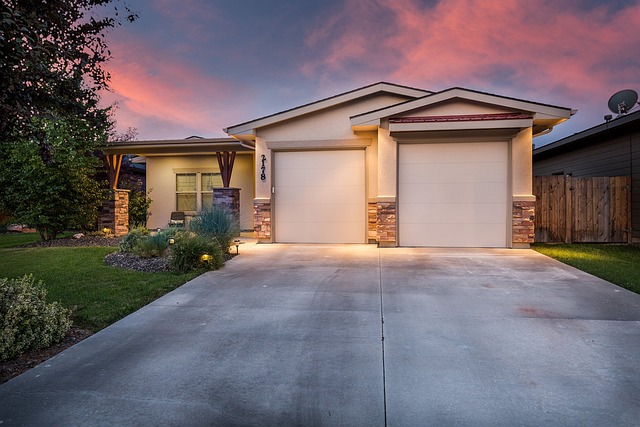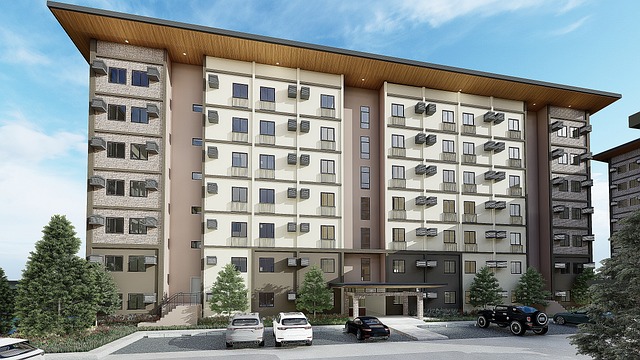Over the past decade, Singapore's Executive Condos (ECs) have transformed into a versatile and popular housing option for a wide range of homeowners, including upgraders from HDB flats, families, and investors. The introduction of the Minimum Occupation Period (MOP) has stabilized the resale market and enhanced the community within these developments. ECs now offer larger units with improved amenities in desirable locations, positioning them as a competitive alternative to private condominiums, especially after 10 years when they can transition into fully private properties. These homes have demonstrated significant resilience and appreciation potential, consistently outperforming other housing types in terms of price growth due to their unique mid-market status. As ECs mature, they offer a cost-effective blend of public and private housing benefits, with a focus on sustainable living and modern amenities that cater to tech-savvy buyers. Looking ahead, the Executive Condo After 10 Years is set to become even more appealing with advancements in smart home technology and sustainable features, while also broadening its demographic appeal. Strategic urban planning and government policies will further cement ECs as fully integrated communities offering a balanced living experience close to essential amenities and transport networks.
Executive Condominiums (ECs) have emerged as a significant pillar in Singapore’s housing landscape, offering a unique blend of public and private housing benefits. This article delves into the transformation of ECs over a decade post the Minimum Occupation Period (MOP) completion, exploring their evolution, longevity, and future prospects. We will examine how owning an Executive Condo after 10 years fits into the financial plans of residents, the community enrichment it provides, and the trends shaping its trajectory. Join us as we navigate the multifaceted world of ECs and understand their enduring appeal and potential for appreciation over time.
- Understanding the Evolution of Executive Condominiums (ECs) Over a Decade: A Glimpse into the EC Landscape Post-MOP
- The Longevity and Appreciation Potential of Executive Condos After 10 Years: An Analysis
- Living in an Executive Condo: Residency Experience and Community Benefits After a Decade
- Financial Considerations for Owning an Executive Condominium Beyond the 10-Year Mark: Costs, Savings, and Returns
- The Future of Executive Condos: Trends, Upgrades, and Predictions Post-10 Years of MOP Completion
Understanding the Evolution of Executive Condominiums (ECs) Over a Decade: A Glimpse into the EC Landscape Post-MOP

Over the past decade, Executive Condominiums (ECs) in Singapore have undergone significant transformations that reflect the changing needs and aspirations of homeowners. Initially conceptualized to serve as a stepping stone for couples or families from public to private housing, ECs have evolved into a desirable housing option for a broader demographic. Post the introduction of the Minimum Occupation Period (MOP), which mandates residents to live in the unit for at least 5 years before selling it on the open market, the landscape of ECs has matured. This policy adjustment aimed to stabilize the resale market and ensure a balanced demographic within these developments.
The evolution of Executive Condominiums over the past ten years can be attributed to both policy refinements and market demand. Post-MOP, ECs have seen an influx of upgraders from HDB flats, young families, and even investors drawn to the unique proposition of a 99-year leasehold property with condominium facilities at a relatively more affordable price point compared to private condominiums. The successive launches of new EC projects have catered to this growing segment, offering larger units, enhanced amenities, and prime locations. As a result, the EC landscape has become more vibrant and competitive, reflecting the diverse needs of homeowners at different life stages.
The Longevity and Appreciation Potential of Executive Condos After 10 Years: An Analysis

Over the course of a decade, Executive Condominiums (ECs) have demonstrated a remarkable resilience and potential for appreciation, making them an attractive investment option for both families and investors. An analysis of ECs over the past ten years reveals that these properties have consistently outperformed many other housing types in terms of price growth. This is due in part to their unique status as mid-market public-private housing initiatives, which allow eligible couples or individuals to own a larger unit at a subsidized price compared to private condominiums. As these ECs mature, they often transition to become private condominiums after reaching the fifth anniversary from their Temporary Occupation Permit (TOP) date, further enhancing their value. The transition not only aligns with the changing needs of residents but also taps into a wider pool of potential buyers, which can drive up property values.
The longevity and appreciation potential of Executive Condos after 10 years are underpinned by several factors. Firstly, the strategic locations of these developments often near amenities, transportation nodes, and future growth areas, contribute to their desirability over time. Secondly, the track record of past EC projects shows a trend of value retention and capital appreciation, which is encouraging for investors looking for long-term gains. Additionally, the scarcity of land in Singapore, coupled with the government’s population policy, ensures that demand for mid-market housing will remain steady. This supply-demand dynamics further solidifies the appeal of ECs as a sound investment for those considering a property that can stand the test of time and offer both functional living and financial benefits after a decade.
Living in an Executive Condo: Residency Experience and Community Benefits After a Decade

Over the past decade, the Executive Condominium (EC) scheme in Singapore has evolved to offer a unique residency experience that caters to the aspirations of both young families and upgrading couples. An EC after 10 years continues to be a coveted living option due to its blend of public and private housing benefits. Residents enjoy the spaciousness and modern amenities typically associated with private condominiums, yet at price points that are more accessible than pure market rate properties. The community within an EC is often characterized by a diverse mix of residents who have typically progressed from younger, first-time homeowners to more established families. This transition reflects the adaptability and long-term value of ECs, which mature alongside their inhabitants.
The communal advantages of living in an Executive Condominium become even more pronounced after a decade. Residents often report a strong sense of belonging and neighborhood cohesion, fostered through shared facilities and regular community events. The management of these properties typically includes initiatives that enhance the living experience, such as lifestyle programs and social gatherings. Additionally, the EC’s design, which often includes ample green spaces and recreational amenities, contributes to a quality of life that is both enriching and sustainable over time. After 10 years, many EC residents find that their investment has not only appreciated in terms of property value but has also grown in the richness of community living and the opportunities it presents for both personal and social development.
Financial Considerations for Owning an Executive Condominium Beyond the 10-Year Mark: Costs, Savings, and Returns

Owning an Executive Condominium (EC) beyond the 10-year mark involves a unique set of financial considerations that potential owners should be aware of. Post the initial Minimum Occupation Period (MOP), which spans 5 years, EC owners have the flexibility to sell their units on the open market or lease them out. This transition phase can affect the property’s valuation and rental yield. Typically, properties within this maturity range have matured significantly in terms of capital appreciation due to their prime location and the development of the surrounding area. However, it is imperative to consider the remaining lease, which for ECs, may start decreasing from the original 99 years after the first 5 years of occupation. Owners should also factor in maintenance fees, sinking fund top-ups, and potential renovation costs as the property ages.
Furthermore, beyond the 10-year mark, the financial outlook includes assessing the balance of your mortgage, if any, and the remaining lease length, which can influence the marketability and valuation of your EC. Savvy investors may view the reduced lease as an opportunity to enhance the property’s value through renovations or capital improvements that cater to the needs of newer tenants or future buyers. Additionally, the rental income generated post-MOP can be a source of steady savings or returns, especially if the property is well-positioned in a growth area. It’s advisable to engage with real estate experts and financial planners to navigate the specific financial implications of owning an EC beyond the 10-year mark, ensuring that your investment strategy aligns with your long-term financial goals.
The Future of Executive Condos: Trends, Upgrades, and Predictions Post-10 Years of MOP Completion

In the decade following the Minimum Occupation Period (MOP) completion for Executive Condominiums (ECs), trends indicate a maturation of these properties, reflecting the evolving needs and preferences of residents. Post-MOP, ECs transition from starter homes to more desirable options for families and upgraders due to their location, size, and price point compared to private condominiums. Over this period, we anticipate a continued rise in smart home integrations and sustainable living features, as these enhancements become more standard in residential developments. The integration of advanced technology will likely be a focal point, with ECs featuring the latest innovations for security, energy efficiency, and convenience, making them even more attractive to tech-savvy buyers.
Furthermore, the demographic profile of residents living in Executive Condos After 10 Years is expected to diversify as these homes appeal to a broader spectrum of the population. With the potential for upgrades in community amenities and facilities, ECs will offer lifestyle options comparable to those found in private condominiums. The future landscape of ECs may also see a shift towards better connectivity with public transportation and central business districts, as well as incorporating green spaces and recreational areas that cater to families and active lifestyles. These trends, coupled with strategic urban planning and government policies, will shape the future of Executive Condos After 10 Years to be not just a home but a community where residents can live, work, and play in harmony.
After exploring the multifaceted aspects of Executive Condos (ECs) over a decade post-Minimum Occupation Period (MOP), it is evident that ECs serve as a commendable housing option for both young families and upgraders. The analysis demonstrates that owning an Executive Condo After 10 Years presents a compelling investment with significant appreciation potential, aligning with the financial considerations that underscore its viability beyond the initial MOP period. As the EC landscape continues to mature, future trends and upgrades promise to enhance the living experience and community benefits even further. In conclusion, the longevity and value of Executive Condominiums are poised to endure, making them a smart choice for those looking to settle in a vibrant community with long-term benefits.
